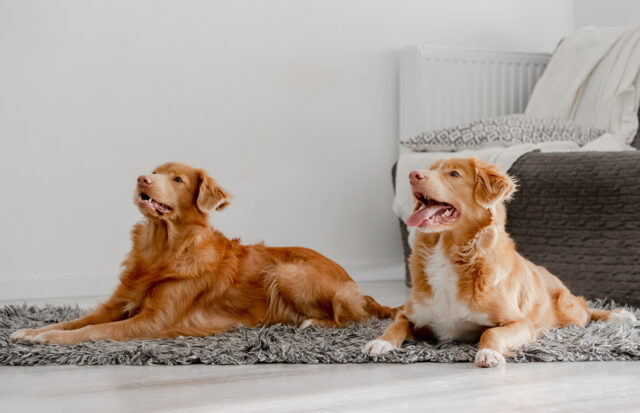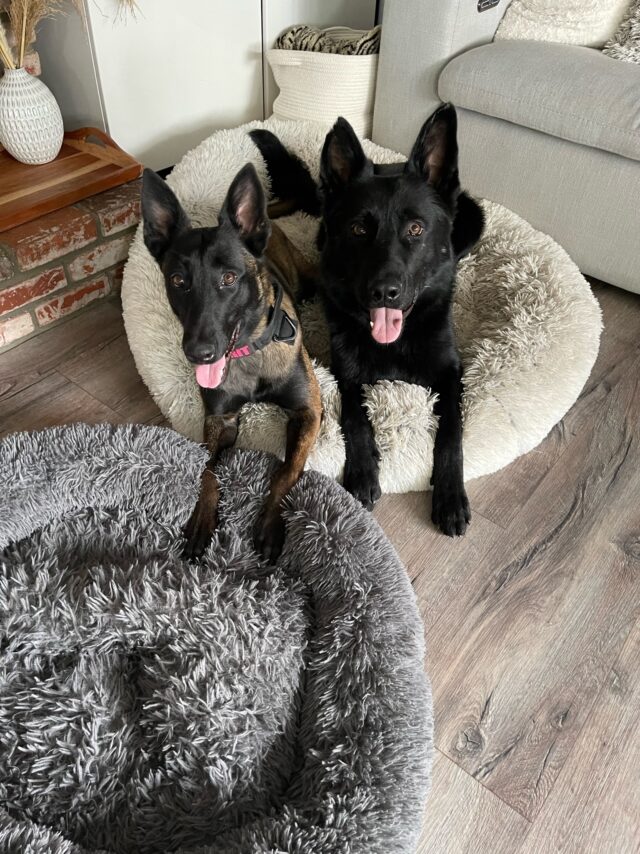Navigating a Two-Dog Household: Building Harmony
Written on August 13, 2024

Bringing a second dog into your home can enrich your life and provide companionship for your first dog. However, it also introduces a new dynamic that requires careful management to ensure a peaceful and happy household. This guide provides advice on maintaining harmony between your two dogs, addressing relationship challenges, and fostering a positive pack dynamic.
Understanding Dog Behavior and Pack Hierarchy
Dogs are social animals with an innate understanding of hierarchy within their packs. When introducing a second dog, it’s essential to establish a clear structure to prevent conflicts and confusion.
Key Points:
- Body Language and Communication: Dogs communicate through body language, vocalizations, and scent. Observing these cues helps you understand their relationship and potential issues.
- Hierarchy and Roles: Pack hierarchy involves roles and responsibilities rather than dominance. Recognizing each dog’s personality helps in understanding their place in the pack.

Establishing Rules for Affection and Attention
Maintaining fairness and consistency in providing affection and attention is crucial in a two-dog household. Setting clear boundaries helps prevent jealousy and competition.
Key Guidelines:
- No Interruptions: Do not allow one dog to interrupt when the other is receiving attention, play, or affection. This teaches respect for personal space and reinforces that both dogs will receive equal affection.
- One-on-One Time: Spend individual time with each dog, strengthening your bond with them. This prevents rivalry and ensures each dog feels valued.
- Clear Signals: Use clear commands or signals to indicate when it’s one dog’s turn for attention, helping both dogs understand the rules.

Managing High-Value Items and Feeding
High-value items like toys, bones, or chews can often lead to competition and conflicts. Proper management of these resources is essential.
Key Strategies:
- Avoid Leaving High-Value Items Out: Store toys, chews, and other high-value items when not being supervised or separated to prevent resource guarding and fights.
- Separate Feeding Areas: Always separate the dogs during meals to prevent food aggression. Use a crate, gates or feed them in different rooms if necessary.
- Post-Meal Digestion Time: Allow at least 30 minutes of digestion time after meals before reintroducing the dogs. This reduces the likelihood of food guarding behavior and helps them transition out of a predatory state.
Establishing Leadership and Preventing “Sibling” Parenting
As the pet owner, it’s crucial to set the tone for hierarchy and provide clear leadership. Just like with children, dogs should not be left to “parent” or correct each other.
Leadership and Structure:
- Owner as the Leader: Take on the role of the “top dog” by setting rules and boundaries. This provides a sense of security and prevents the dogs from trying to establish dominance over each other.
- Prevent Sibling Parenting: Do not allow one dog to discipline or “parent” the other. This responsibility should lie with the owner to avoid confusion and competition. Consistent training and rules help establish this dynamic.

Catching and Diffusing Early Signs of Conflict
It’s easier to manage and prevent conflicts by catching early signs of tension between your dogs. This approach also helps avoid the trauma that can result from fights.
Key Observations:
- Body Language: Watch for signs of discomfort, such as stiff posture, growling, or prolonged staring. These signals indicate potential conflicts.
- Early Intervention: Interrupt and redirect potentially escalating situations calmly and confidently. Use a distraction, such as calling the dogs or offering an outlet of redirection, to diffuse tension.
- Avoiding Trauma: Preventing fights is crucial, as conflicts can lead to lasting trauma and increased tension. Dogs involved in fights may become more on edge, leading to more frequent conflicts.

Promoting Obedience, Structure, and Manners
A well-structured household with clear rules and expectations promotes a harmonious environment for your dogs.
Key Practices:
- Obedience Training: Regular training sessions reinforce obedience and provide mental stimulation. Consistent commands and rewards help both dogs understand expectations.
- House Manners: Establish rules for behaviors like waiting at doorways, sitting before receiving treats, and not jumping on furniture. This structure helps prevent chaos and reinforces your role as the leader.
- Exercise and Stimulation: Ensure both dogs receive ample physical and mental exercise. Boredom and excess energy can lead to conflicts. Walks, playtime, and interactive toys are essential.

Clear Leadership and Communication
Effective communication and leadership are fundamental in managing a multi-dog household.
Key Points:
- Consistent Commands: Use clear, consistent commands for both dogs. This reduces confusion and reinforces training.
- Non-Verbal Cues: Utilize body language and non-verbal signals to communicate with your dogs. This can be especially useful in preventing conflicts.
- Leadership Presence: Maintain a calm and assertive demeanor. Dogs look to their owner for cues on how to behave, so demonstrating confidence and control is vital.
Successfully managing a two-dog household requires understanding, patience, and consistency. By recognizing and addressing the unique needs and personalities of each dog, setting clear rules and boundaries, and providing strong leadership, you can create a harmonious and happy environment for your furry friends. Remember, your role as the “top dog” is crucial in fostering a positive relationship between your dogs, ensuring they coexist peacefully and enjoy a fulfilling life together.
For more in-depth advice, consider consulting resources from professional dog trainers and behavioral experts specializing in inter-dog relationships and pack dynamics. These experts can offer tailored strategies to help you navigate the complexities of a multi-dog household. If you are in the Southern California area, contact us at Specialty Dog Training for a complimentary discovery call to learn more about our dog behavioral programs and how one of these board and train intensives can support your goals and work through any challenges you are facing within the pack dynamic in your home.
